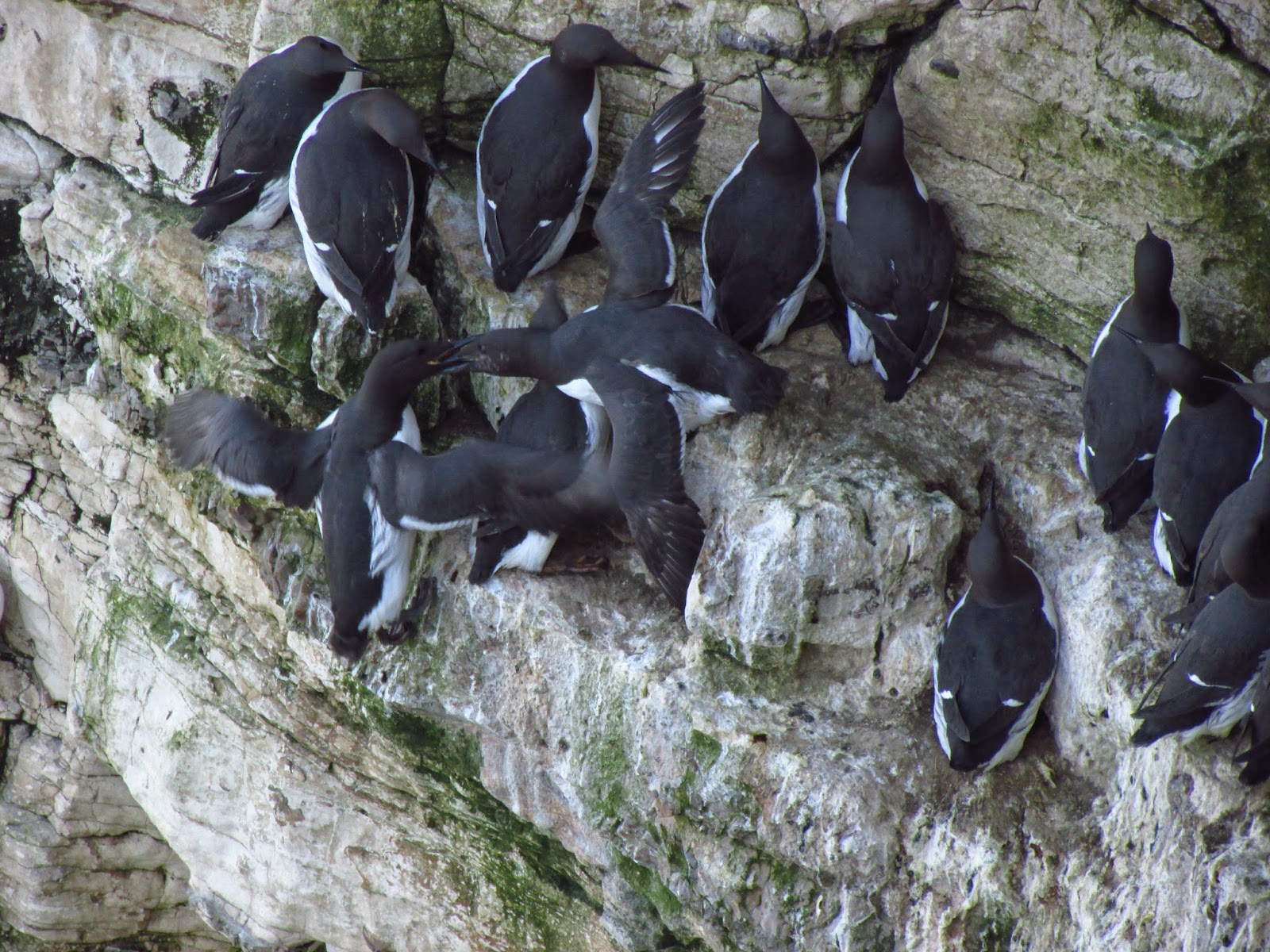Blackbird, Robin, Dunnock, Chaffinch and Stock Dove sing and a Carrion Crow calls, making gargle-like calls from a tree.
Mallards are mostly resting, most females paired with two males, as the sex ratio is very unbalanced in the park.
A Mistle Thrush feeds on the grass, oblivious to the hustle and bustle of people in the park. I get 5 m away from it and sit on a bench to take some photos. Tilting its head looking and listening for worms, and occasionally keeping an eye for aerial predators.
Common Gulls won't stay in the park for much longer, soon, they will migrate to their summer grounds for breeding. Already the winter flock, usually 100 strong, has dwindled and is dominated by young immature birds. These squabble for some rice crispies.
This one posed nicely for me.
The larger Herring Gulls are resident in town, they winter here and breed on roofs, safely concealed from view. Today an adult pair and five immatures hanging out together, behaving like a family group. Three are 1st winter immatures, and 2 of them are 2nd winter. Gulls are long-lived birds and I wonder if young stay around their parents territory until they are fully adult.
One of the adults in summer plumage, drinking. The red spot on the bill very bright and no trace of winter speckling on the head.
An adult, 1st winter and 2nd winter.
A 1st winter individual, with no grey on the mantle and speckled brown all over.
The 2nd winter looks paler, with almost white head, and has silver feathers on the mantle.
Woodpigeon.
Moorhen. I wonder if its partner is already incubating.
Feral pigeon males dance and twirl round to impress females. One handsome male, after courting a female (its mate?) and receiving an annoyed peck in return, gets on with finding suitable sticks for nest building.



























































